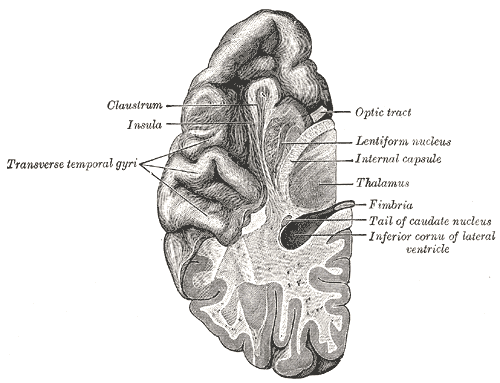
The modern computer has been essential to coming to understand how the Social Brain works, whether serving as a stimulus in an experiment, creating behavioral models, or performing complex statistical analyses on vast data sets.
However, IBM has been trying to take this a huge leap further. That is, IBM has been attempting to create a computer that works just like the human brain, because the human brain regularly performs an enormous number of processes, simultaneously, while expending minimal energy in the process (Marois & Ivanoff, 2005).
A recent breakthrough in IBM's project came out today:
"IBM has announced significant progress toward creating a computer system that simulates and emulates the brain's abilities for sensation, perception, action, interaction and cognition, while rivaling the brain's low power and energy consumption and compact size.
Modern computing is based on a stored program model, which has traditionally been implemented in digital, synchronous, serial, centralized, fast, hardwired, general-purpose circuits with explicit memory addressing that indiscriminately over-write data and impose a dichotomy between computation and data.
In stark contrast, cognitive computing -- like the brain -- will use replicated computational units, neurons and synapses that are implemented in mixed-mode analog-digital, asynchronous, parallel, distributed, slow, reconfigurable, specialized and fault-tolerant biological substrates with implicit memory addressing that only update state when information changes, blurring the boundary between computation and data.
To perform the first near real-time cortical simulation of the brain that exceed the scale of the cat cortex, the team built a cortical simulator that incorporates a number of innovations in computation, memory, and communication as well as sophisticated biological details from neurophysiology and neuroanatomy.
This scientific tool, akin to a linear accelerator or an electron microscope, is a critical instrument used to test hypotheses of brain structure, dynamics and function. The simulation was performed using the cortical simulator on Lawrence Livermore National Lab's Dawn Blue Gene/P supercomputer with 147,456 CPUs and 144 terabytes of main memory.
The algorithm, when combined with the cortical simulator, allows scientists to experiment with various mathematical hypotheses of brain function and structure of how structure affects function as they work toward discovering the brain's core computational micro and macro circuits.
After the successful completion of Phase 0, IBM and its university partners were recently awarded $16.1 million in additional funding from the Defense Advanced Research Projects Agency (DARPA) for Phase 1 of DARPA's Systems of Neuromorphic Adaptive Plastic Scalable Electronics (SyNAPSE) initiative. This phase of research will focus on the components, brain-like architecture and simulations to build a prototype chip.
The long-term mission of IBM's cognitive computing initiative is to discover and demonstrate the algorithms of the brain and deliver low-power, compact cognitive computers that approach mammalian-scale intelligence and use significantly less energy than today's computing systems."
Source: Scientists Perform Cat-Scale Cortical Simulations and Map the Human Brain
--
Questions on the Implications & Limits of Supercomputers:
-If humans are able to successfully re-create their organic brains with cold chips and circuits, using their natural intelligence, and technology grows at an exponential rate (Moore's Law), while evolution progresses at a relatively steady rate (Becoming Human)- is it fair to say that the computing power, complexity, diversity, and richness of IBM's Blue Gene supercomputers will then outmatch that of the very brains which produced them?
-If the brain is the most evolved and sophisticated system known, then creating a computer that exceeds human cognitive capacities is really the triumph of Technology over Evolution - of Human Selection over Natural Selection - no? Does this then place us technically in a new stage of evolution? Are we are already in the age of self-evolution?
-Can we manufacture "creative cognitive-computers"? These IBM supercomputers may become as quick and expansive as the human brain, but will they offer equally unique and/or creative output? More? Less?
-Can these highly-developed machines demonstrates dynamic creativity without limbic and emotional systems? Does creativity require emotion?
-Can we build emotional computers?
-It is possible for us to produce a computer with consciousness, that is, self-awareness?






